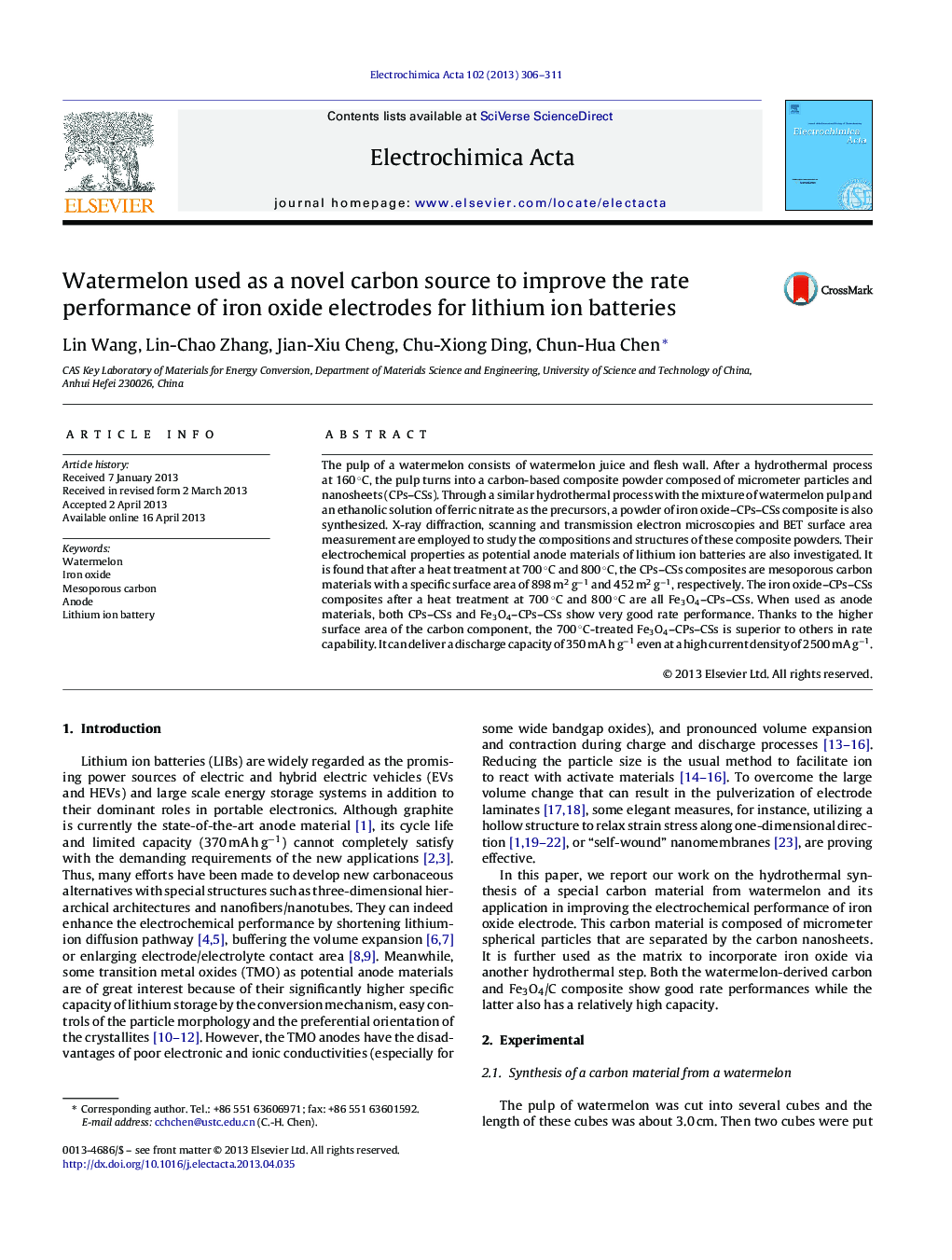| کد مقاله | کد نشریه | سال انتشار | مقاله انگلیسی | نسخه تمام متن |
|---|---|---|---|---|
| 187287 | 459639 | 2013 | 6 صفحه PDF | دانلود رایگان |

• Watermelon is used to synthesize the carbon material via an environmentally friendly process.
• The derived carbon materials exhibit high specific surface area and good rate performance.
• Good rate performances of these FeOx/C composites in 3.0–0.01 V are achieved.
The pulp of a watermelon consists of watermelon juice and flesh wall. After a hydrothermal process at 160 °C, the pulp turns into a carbon-based composite powder composed of micrometer particles and nanosheets (CPs–CSs). Through a similar hydrothermal process with the mixture of watermelon pulp and an ethanolic solution of ferric nitrate as the precursors, a powder of iron oxide–CPs–CSs composite is also synthesized. X-ray diffraction, scanning and transmission electron microscopies and BET surface area measurement are employed to study the compositions and structures of these composite powders. Their electrochemical properties as potential anode materials of lithium ion batteries are also investigated. It is found that after a heat treatment at 700 °C and 800 °C, the CPs–CSs composites are mesoporous carbon materials with a specific surface area of 898 m2 g−1 and 452 m2 g−1, respectively. The iron oxide–CPs–CSs composites after a heat treatment at 700 °C and 800 °C are all Fe3O4–CPs–CSs. When used as anode materials, both CPs–CSs and Fe3O4–CPs–CSs show very good rate performance. Thanks to the higher surface area of the carbon component, the 700 °C-treated Fe3O4–CPs–CSs is superior to others in rate capability. It can deliver a discharge capacity of 350 mA h g−1 even at a high current density of 2500 mA g−1.
Journal: Electrochimica Acta - Volume 102, 15 July 2013, Pages 306–311